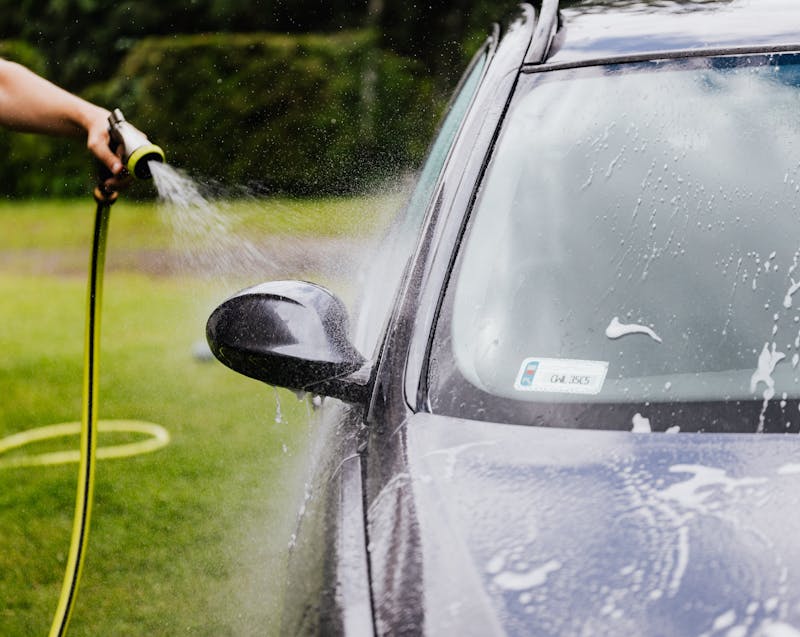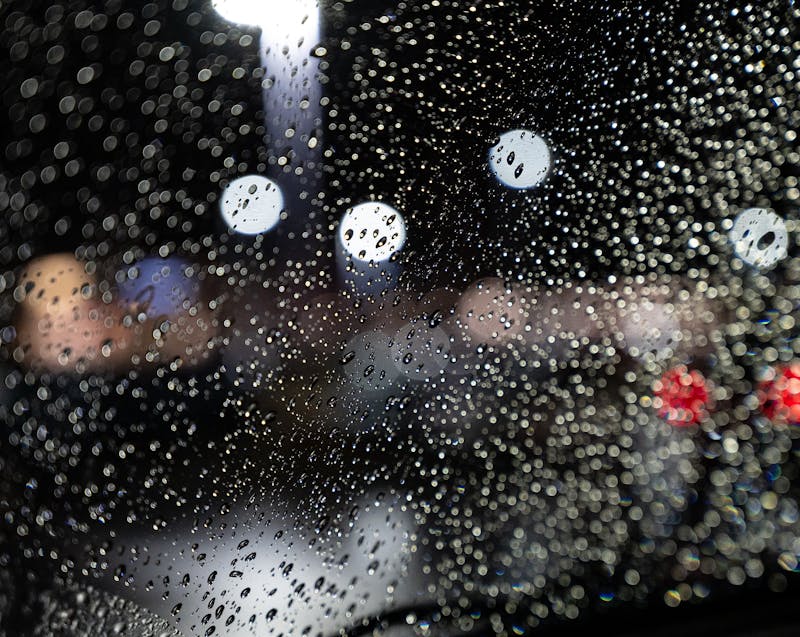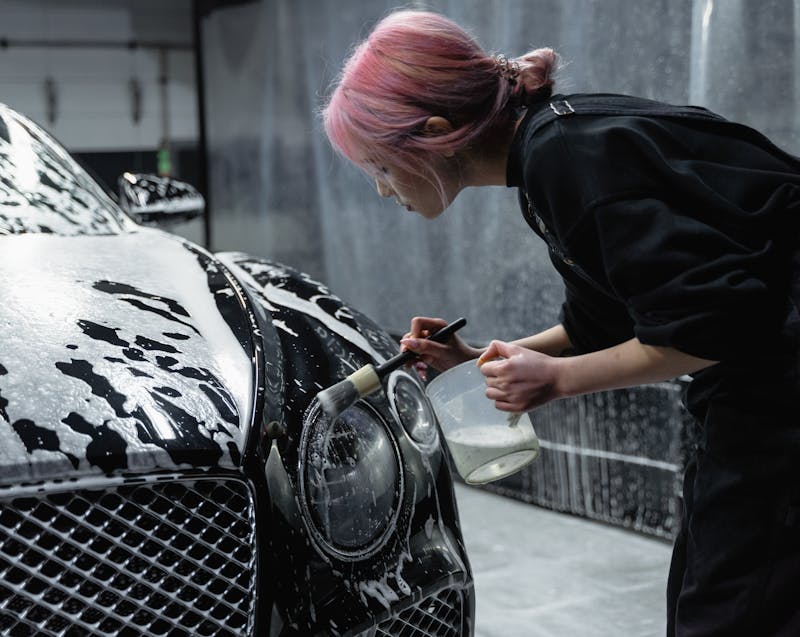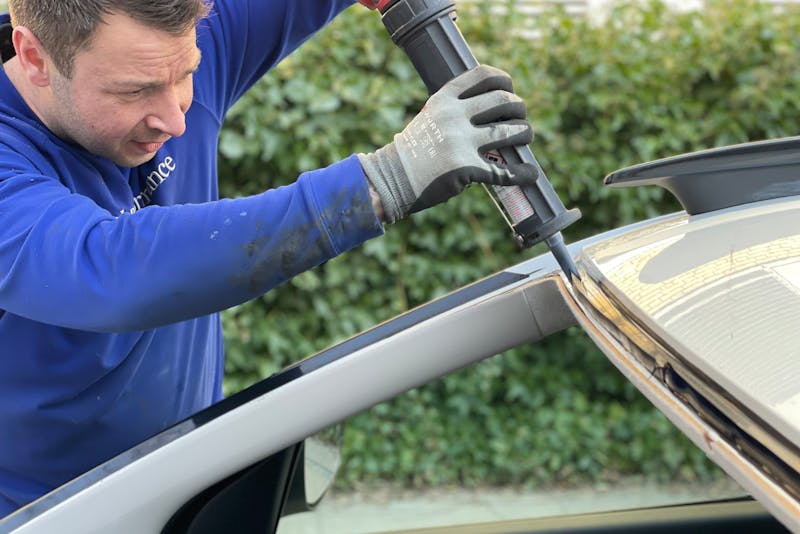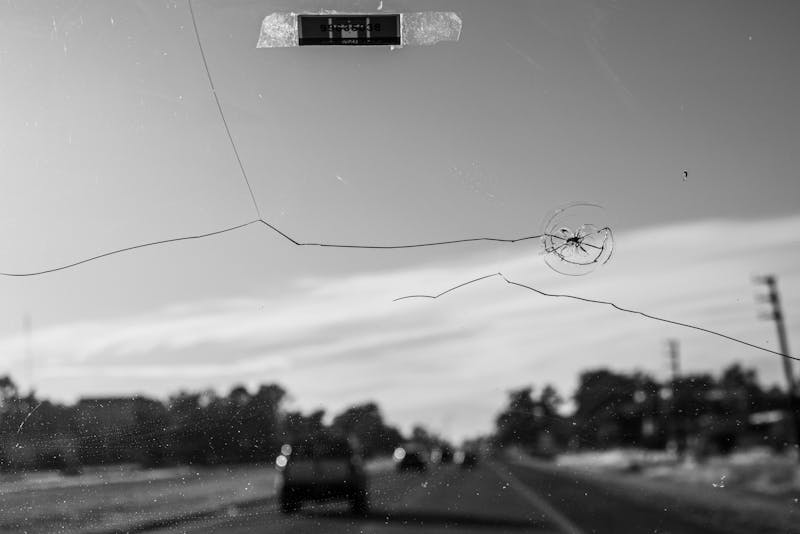
- Water spots on auto glass are caused by mineral deposits from hard water, rain, or sprinklers.
- Always start with a gentle wash to remove dirt before applying any cleaning solution.
- A vinegar-and-water mix is an effective, safe DIY remedy for most water spots.
- Use a clay bar or specialized glass cleaner for stubborn, long-term stains.
- Avoid harsh chemicals or abrasive tools that can scratch or dull the glass.
- Apply a glass sealant or water repellent to prevent future water spot buildup.
- Regular maintenance and proper drying after washing help keep auto glass clear and spotless.
Few things are more frustrating for car owners than seeing stubborn white spots on an otherwise shiny windshield or side windows. These water spots—caused by mineral deposits from rain, sprinklers, or hard water—don’t just look unsightly; they can also reduce visibility and, over time, damage your car’s glass if left untreated. While harsh chemicals and abrasive methods may remove the stains, they can also scratch or dull the glass. Fortunately, there are safe, effective ways to restore clarity to your auto glass without causing harm.
This guide will show you how to remove water spots from auto glass without damaging the surface, using proven methods that are gentle, affordable, and easy for any car owner to follow.
What Causes Water Spots on Auto Glass?
Before removing water spots, it helps to understand what causes them. Water spots form when water droplets dry and leave behind minerals such as calcium, magnesium, and silica. Over time, these minerals harden and bond to the glass, especially under sunlight.
Common sources of water spots include:
- Sprinklers or hose water containing minerals
- Acid rain or polluted rainwater
- Improper washing and drying of the car
- Parking near construction sites or dusty areas
When these minerals aren’t cleaned promptly, they can etch into the surface of the glass. That’s why addressing them early—and doing it the right way—is crucial for maintaining visibility and preventing long-term damage.
How to Remove Water Spots from Auto Glass Without Damaging the Surface
The best cleaning techniques are those that target the mineral buildup while protecting the glass finish. Here’s how to do it safely and effectively.
1. Start with a Gentle Wash
Before applying any solution, wash your car’s windows using a mild car shampoo and a clean microfiber cloth. This step removes dirt, dust, and loose mineral deposits that could scratch the surface during treatment. Rinse thoroughly with clean water and dry the glass using a fresh microfiber towel.
2. Try a Vinegar and Water Solution
White vinegar is one of the most effective and natural solutions for removing light water spots. Its acidity helps dissolve mineral deposits without damaging the glass.
How to use it:
- Mix white vinegar with distilled water and put the mixture in a spray bottle.
- Spray generously over the affected areas.
- Let it sit for about 2–3 minutes to break down the minerals.
- Wipe off using a clean microfiber towel.
- Rinse with clean water and dry completely.
Repeat the process if the spots are still visible. For tough stains, you can apply undiluted vinegar, but avoid leaving it on for too long, especially if your vehicle is parked under the sun.
3. Use a Clay Bar for Stubborn Spots
If vinegar doesn’t fully work, a detailing clay bar can help lift bonded contaminants. Clay bars are designed to glide over the glass and pick up tiny particles without scratching the surface.
Steps:
- Use a clay lubricant or quick detailer spray to lubricate the surface.
- Glide the clay bar back.
- Use a microfiber towel to wipe the surface.
This method is particularly effective for water spots that have been on the glass for weeks or months.
When to Use Specialized Cleaners and Polishes
For extremely stubborn spots or etched areas, you might need to use a dedicated glass polish or water spot remover. Choose a product that’s non-abrasive and designed specifically for auto glass. Avoid general household glass cleaners, as they may contain ammonia that can damage tinted windows or protective coatings.
Tips when using professional products:
- Always follow the manufacturer’s instructions.
- Apply with a soft applicator pad or microfiber towel.
- Work in small sections to ensure even cleaning.
- Buff gently until the spots disappear.
These products can restore shine and clarity while protecting your glass from future buildup.
How to Prevent Water Spots from Returning
Once your glass is clean, prevention is key to keeping it that way. Here are some helpful habits to adopt:
- Dry your car immediately after washing. Use a microfiber towel or a soft squeegee to remove water before it dries.
- Avoid parking near sprinklers or trees. Hard water and tree sap contribute to mineral buildup.
- Apply a glass sealant or water repellent. Products like Rain-X or ceramic coatings create a protective layer that helps water slide off easily.
- Wash your car regularly. Regular maintenance reduces the chance of minerals bonding with the glass.
Following these steps will keep your windows spotless, clear, and safe for driving.
Bonus Tip: How to Clean Auto Glass for Long-Lasting Shine
Knowing how to clean auto glass properly makes a huge difference in maintaining a spotless finish. Always use microfiber towels instead of paper towels to avoid lint and scratches. Clean in circular motions and finish with vertical and horizontal strokes for streak-free results.
For an added touch, use distilled water in your cleaning mixtures—this prevents new mineral deposits from forming.
Conclusion
Removing water spots from auto glass doesn’t have to involve harsh scrubbing or expensive detailing. With simple materials like vinegar, a clay bar, and proper technique, you can restore your car’s windows to perfect clarity safely. Preventive care, such as using repellents and drying after washing, ensures your glass stays clean and protected. By following these proven steps, you’ll not only enhance your vehicle’s appearance but also improve visibility and safety every time you drive.
